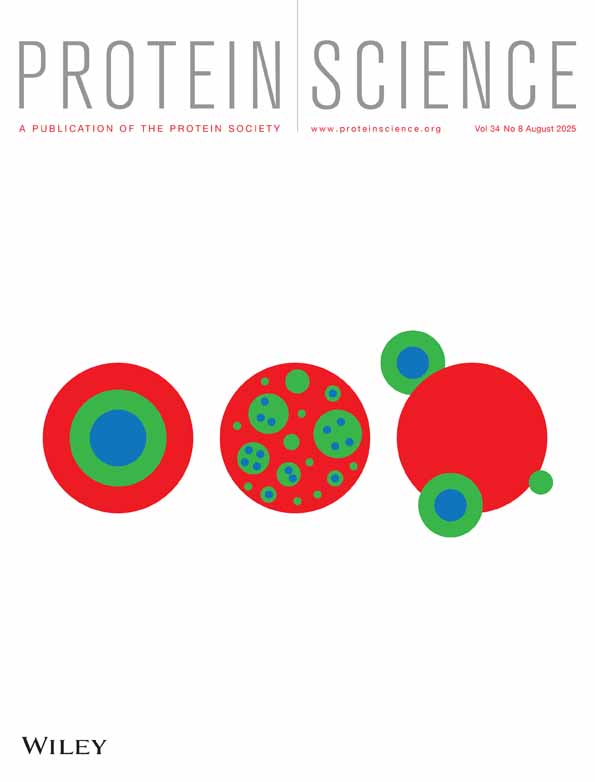Investigation of the backbone dynamics of the igg-binding domain of streptococcal protein g by heteronuclear two-dimensional 1H-15N nuclear magnetic resonance spectroscopy
Abstract
The backbone dynamics of the immunoglobulin-binding domain (Bl) of streptococcal protein G, uniformly labeled with 15N, have been investigated by two-dimensional inverse detected heteronuclear 1H-15N NMR spectroscopy at 500 and 600 MHz. 15N T1, T2, and nuclear Overhauser enhancement data were obtained for all 55 backbone NH vectors of the B1 domain at both field strengths. The overall correlation time obtained from an analysis of the T1/T2 ratios was 3.3 ns at 26 °C. Overall, the B1 domain is a relatively rigid protein, consistent with the fact that over 95% of the residues participate in secondary structure, comprising a four-stranded sheet arranged in a -1, +3x, -1 topology, on top of which lies a single helix. Residues in the turns and loops connecting the elements of secondary structure tend to exhibit a higher degree of mobility on the picosecond time scale, as manifested by lower values of the overall order parameter. A number of residues at the ends of the secondary structure elements display two distinct internal motions that are faster than the overall rotational correlation time: one is fast (<20 ps) and lies in the extreme narrowing limit, whereas the other is one to two orders of magnitude slower (1-3 ns) and lies outside the extreme narrowing limit. the slower motion can be explained by large-amplitude (20-40°) jumps in the n-h vectors between states with well-defined orientations that are stabilized by hydrogen bonds. in addition, residues in the helix and in the outer β-strands (particularly β-strand 2) display a small degree of chemical exchange line broadening, possibly due to a minor rotational motion of the helix relative to the sheet that curls around it.




